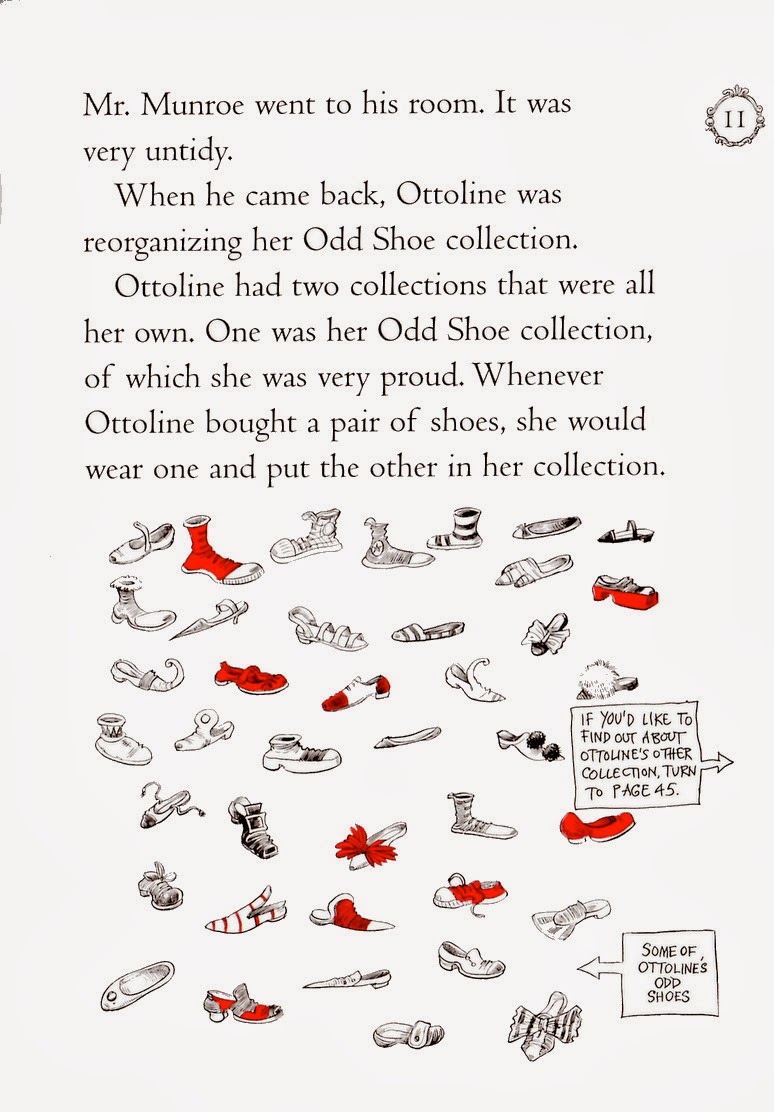


But the students were able to pick up on the different proportions in each of the pictures and the physical distance between the characters on each page not to mention the postcards from Ottoline's parents allowed them to begin framing their response to the story. Ottoline and the Yellow Cat is ostensibly about the mysterious disappearances of lapdogs but much of the story is, in fact, about loneliness - a difficult theme for young students to begin to explain. Munroe with very little prompting from me. Details as simple as the fact that the lightbulbs above Ottoline's dinner table change each time we see the dinner table would lead to discussions about the relationship between Ottoline and Mr. Being able to see the details enabled them to be much more articulate about longer more extended ideas in contrast to the shorter contributions I often get when we read books that rely on the text for the story and being able to understand one another meant they were much more engaged. Because they were picking up on visual details it was also much easier for them to explain their ideas to the other students and conversely much easier for the listening students to understand what they were saying - facilitating actual discussion between students rather than constant vying for my attention. Not only are the pictures very detailed but much of the detail repeats cleverly throughout the book allowing the students to approach the idea of patterns and development as part of a text through the much more accessible route of pictures.

It's this last part that I think makes Ottoline and the Yellow Cat such a great book for teaching close reading to second graders. It's been three months since I taught this book to my group of second graders and they STILL reference it during discussions of entirely unrelated books! Not only that but they bring in other books from the series and insist I look at visual motifs that have carried through from this book, the first in the series.


 0 kommentar(er)
0 kommentar(er)
